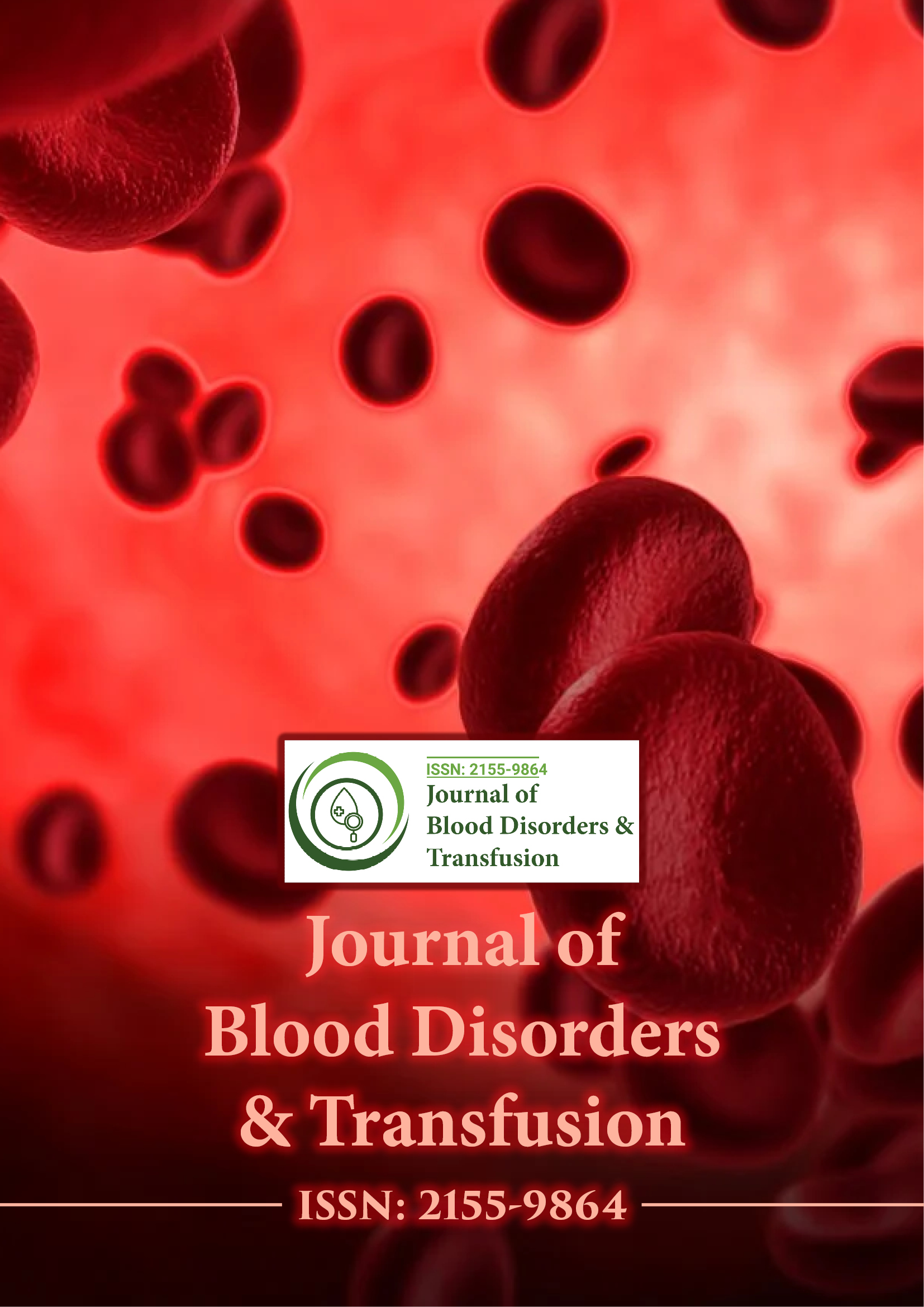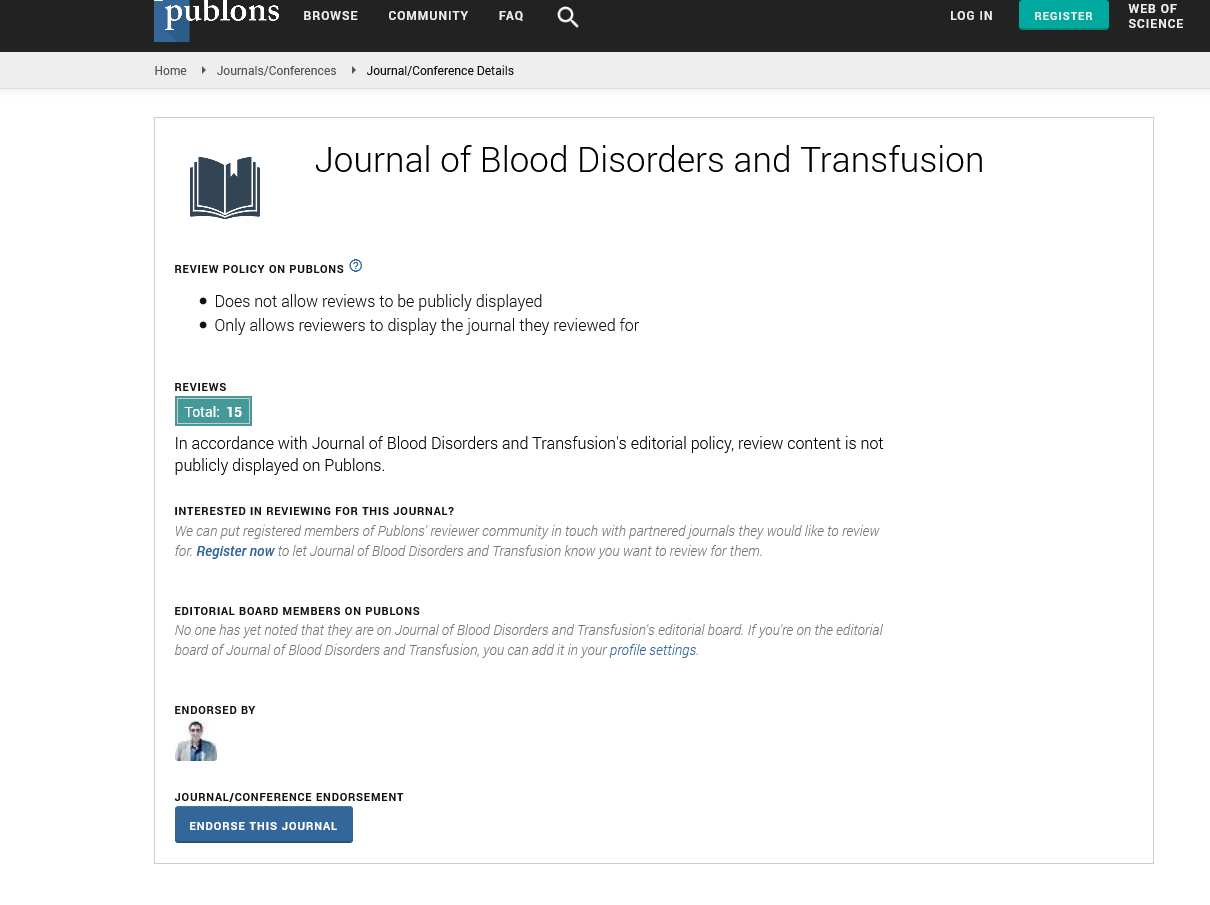Indexed In
- Open J Gate
- Genamics JournalSeek
- JournalTOCs
- Ulrich's Periodicals Directory
- RefSeek
- Hamdard University
- EBSCO A-Z
- OCLC- WorldCat
- Proquest Summons
- Publons
- Geneva Foundation for Medical Education and Research
- Euro Pub
- Google Scholar
Useful Links
Share This Page
Journal Flyer

Open Access Journals
- Agri and Aquaculture
- Biochemistry
- Bioinformatics & Systems Biology
- Business & Management
- Chemistry
- Clinical Sciences
- Engineering
- Food & Nutrition
- General Science
- Genetics & Molecular Biology
- Immunology & Microbiology
- Medical Sciences
- Neuroscience & Psychology
- Nursing & Health Care
- Pharmaceutical Sciences
Role of BMI in predicting prevalence of iron deficiency anemia
2nd International Conference on Hematology & Blood Disorders
September 29-October 01, 2014 DoubleTree by Hilton Baltimore-BWI Airport, USA
Nay T Tun and Mariette Austin
Scientific Tracks Abstracts: J Blood Disorders Transf
Abstract:
Objective: Iron deficiency is thought to be more common in patients who have poor nutrition and low iron intake. However, there have been observations of an inverse relationship between body weight and iron saturation. Therefore, we are assessing whether Body Mass Index (BMI)can affect serum iron levels. Method and Study Design: This is a retrospective case control study where 78 adult patients from age 18-98 years with iron deficiency anemia from Eaton Hospital in-patients as well as a community care clinic in Easton were assessed with regard to their body weight (i.e. BMI). Hemoglobin, serum iron, ferritin, iron binding capacity and iron saturation were measured and correlated with patients? BMI. Patients with any ongoing blood loss such as hematuria, severe menorrhagia, hematochezia or history of gastrointestinal bleeding including peptic ulcer disease, variceal bleeding, hemorrhoidal bleeding, diverticular bleeding, arteriovenous malformation were excluded. Patients who had inflammatory bowel disease, celiac disease, post- surgical malabsorption problems, gastric bypass surgery, gastrointestinal tract malignancy, chronic kidney disease, repeated blood donations, as well as pregnant patients were also excluded from the study. Results: 67 female patients and 11 male patients aged 18-98 years with iron deficiency anemia were evaluated for body mass index. 40 patients had high BMI (BMI ≥30) and 38 patients had low BMI (BMI<30). The median age was 55. The mean hemoglobin of patients in this study was 10.8g/dL. The mean iron level in the high BMI group was 40.6, versus 57.92 μg/dLin the low BMI group (p value=0.08). In addition, the mean ferritin level in the high BMI group was 76.92 versus 198.8 ng/ml in the low BMI group (p value=0.09), using the Welch two sample t-test. The mean TIBC was slightly higher at 352.8 μg/dLin obese patients whereas patients with a low BMI had a lower mean TIBC at 312.72 μg/dL(p value 0.06). Patients with a high BMI had a mean iron saturation of 11.25%, compared to a mean iron saturation of 18.71% in the low BMI group (p value 0.007). Conclusion: In our study, obese patients (BMI≥30) had a higher prevalence of iron deficiency anemia in comparison to patients with BMI<30, after excluding patients with potential blood loss or iron malabsorption. Therefore, BMI is a significant predictor of iron saturation.
Biography :
Nay Thi Tun is currently in Residency Training of Internal Medicine Program in Easton Hospital, PA. She has obtained M.B.B.S in Yangon, Myanmar. She has done her residency training in Central Women?s Hospital in Yangon, Myanmar for Obstetrics and Gynecology. At present she is a committee member of ?Blood Blank? in Easton Hospital and ?Instiutional Review Board? in Easton Hospital as well as she is an acting as a student coordinator. She has participated in many medical meetings and publishes number of research works.

